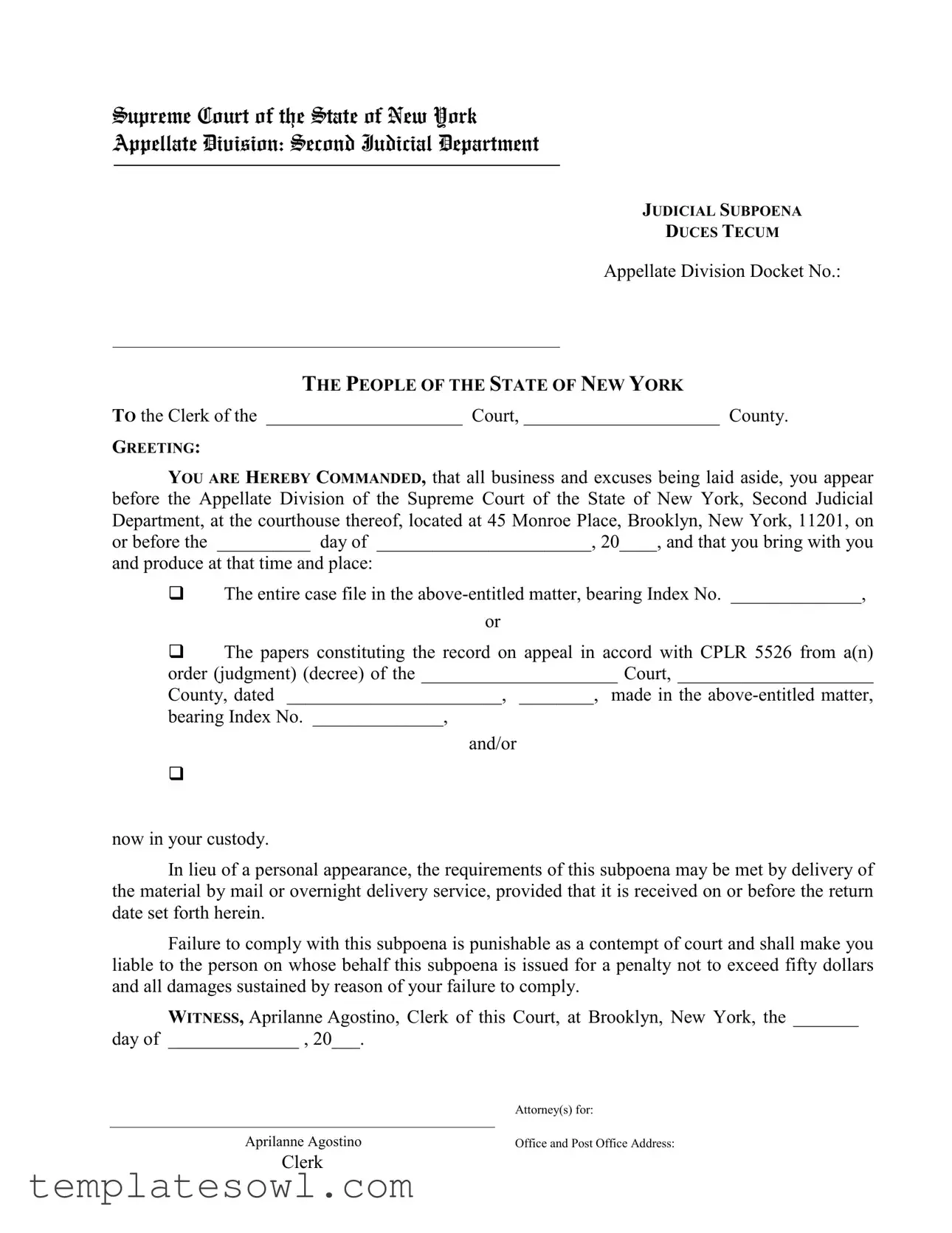Supreme Court of the State of New York
Appellate Division: Second Judicial Department
JUDICIAL SUBPOENA
DUCES TECUM
Appellate Division Docket No.:
THE PEOPLE OF THE STATE OF NEW YORK
TO the Clerk of the _____________________ Court, _____________________ County.
GREETING:
YOU ARE HEREBY COMMANDED, that all business and excuses being laid aside, you appear before the Appellate Division of the Supreme Court of the State of New York, Second Judicial Department, at the courthouse thereof, located at 45 Monroe Place, Brooklyn, New York, 11201, on or before the __________ day of _______________________, 20____, and that you bring with you
and produce at that time and place:
The entire case file in the above-entitled matter, bearing Index No. ______________, or
The papers constituting the record on appeal in accord with CPLR 5526 from a(n) order (judgment) (decree) of the _____________________ Court, _____________________
County, dated _______________________, ________, made in the above-entitled matter, bearing Index No. ______________,
and/or
now in your custody.
In lieu of a personal appearance, the requirements of this subpoena may be met by delivery of the material by mail or overnight delivery service, provided that it is received on or before the return date set forth herein.
Failure to comply with this subpoena is punishable as a contempt of court and shall make you liable to the person on whose behalf this subpoena is issued for a penalty not to exceed fifty dollars and all damages sustained by reason of your failure to comply.
WITNESS, Aprilanne Agostino, Clerk of this Court, at Brooklyn, New York, the _______
day of ______________ , 20___.
|
Attorney(s) for: |
|
|
Aprilanne Agostino |
Office and Post Office Address: |

